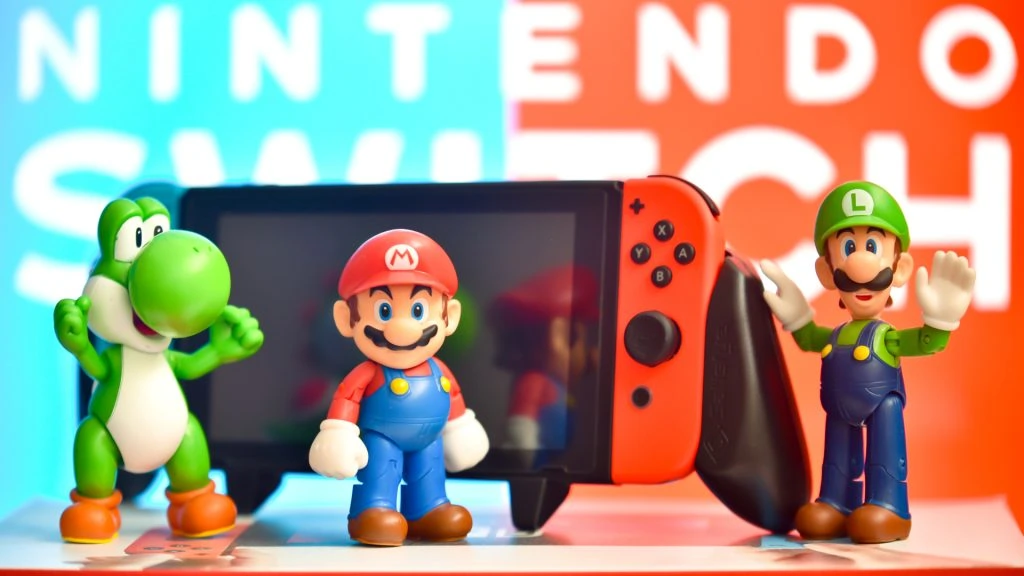„Super Mario“, „Donkey Kong“, „The Legend of Zelda“ – the mere sound of these names makes the hearts of millions of video game fans in Germany and around the world skip a beat. Entire generations have grown up with the heroes from the Japanese video game developer Nintendo.
They are cult figures, even legends – and a piece of cultural history. From October 2, fans can discover how it all began and how Nintendo became a global video game giant at the world’s only Nintendo Museum near Japan’s ancient imperial city of Kyoto. The nostalgic journey through the company’s history is a mixture of product exhibition and interactive gaming paradise. The German Press Agency was allowed to take a look around in advance.
The journey through the company’s 135-year history – from its beginnings in the 19th century to the present day – begins by escalator on the first floor. Oversized consoles from the various Nintendo eras hanging from the ceiling immediately catch the eye. From the Family Computer or Famicom from 1983 (marketed overseas in a different casing as the Nintendo Entertainment System) to the Game Boy and the current Nintendo Switch.
Journey into the past
Visitors are immediately reminded of their own past. Nintendo’s legendary video game developer Shigeru Miyamoto explains that they wanted to create a place where three generations of a family can look back on their own video game experiences with joy and where visitors can share their experiences. The Japanese designer, who originally wanted to become a manga artist, became one of the most successful video game designers of all time with series such as „Super Mario“, „Donkey Kong“, „The Legend of Zelda“ and „Pikmin“.
„Each person can have their own place here where they can indulge in fond memories,“ says Miyamoto, describing the concept in an interview with selected foreign journalists. The individual consoles, including accessories and the corresponding games, are presented in their original packaging. The respective games can be seen in action on monitors above and heard over loudspeakers. „It’s also very surprising for me to know that all these figures are more than 20 years old,“ says Miyamoto. The fans also learn how the graphics of the Nintendo consoles have developed.
From playing cards to video game consoles
The circular exhibition ranges from Hanafuda playing cards, with which Nintendo’s company history began in 1889, to board games and other toys from the 1950s to 1970s and video game consoles. Initially, the concept was to show Nintendo’s products. „But when I put myself in the visitors‘ shoes, I want to take at least a little look behind the scenes, something we haven’t been able to do before,“ says Miyamoto. That’s why there is also an area with prototypes, in which various concepts of the Wii Balance Board are shown, for example.
But what would a Nintendo museum be if you weren’t allowed to play there too? Following the tour through the many exhibits, eight games await visitors on the first floor, which illustrate the diversity of the Nintendo world and create new experiences at the same time. In a modern variation of Game & Watch, the first pocket-sized portable console launched by Nintendo in the 1980s, visitors interact with a game projected onto the wall using the shadows of their arms. There are two games for this: „Ball“, the first Game & Watch game at the time, and „Manhole“.
With Zapper and Super Scope against Mario’s adversaries
In a kind of digital version of the traditional card game Hanafuda, visitors can also use smart devices to search for motifs projected onto the floor. Zapper & Scope, a light-based shooting game reminiscent of the bowling alleys converted into shooting ranges by Nintendo in the 1970s, is a real blast. On a huge, cinema-like screen, you can shoot at Mario’s opponents with Zapper and Super Scope and compete with other visitors. Things get really nostalgic in the Nintendo Classics area, where visitors can try out more than 80 NES, Super NES or Nintendo 64 games, including „Mario Kart“, „Donkey Kong“ and „The Legend of Zelda“, on consoles almost like in the old days – for a limited time.
But watch out: Each ticket is loaded with just ten digital coins. These are quickly used up. There is no way to buy more coins in the museum. If you want to play more, you have to register for a new ticket on another day. These are only available by lottery via the museum’s official website. It is said that no more than 1500 to 2000 visitors are allowed in per day.
Miyamoto: We are an entertainment company
The museum building, located just a few minutes‘ walk from Ogura train station in the city of Uji, is part of Nintendo’s history. Founded in 1889 as a manufacturer of playing cards, the long-established company initially used the Uji Ogura factory built in 1969 to produce playing cards and then, from 2016, as a warehouse before deciding to set up a museum there. The area in front of the museum building is now amusingly paved with 8-bit motifs from „Super Mario“ games.
The museum is intended to express „that we are first and foremost an entertainment company“, says Miyamoto. And not just a video game manufacturer. Every year, between 100 and 200 new employees join Nintendo. „And every year I give this talk about what Nintendo is,“ says Miyamoto. He talks for two hours or even longer. „And after doing this for 20 years, I kind of don’t want to do it anymore,“ he laughs, explaining another motivation for the museum.
At the same time, the museum content should continue to evolve. Revising, changing and correcting is „exactly the same as with video games“, says the famous developer about the preparations. Changes were made even a few days before the opening. „And as Nintendo develops new games and hardware, this museum will grow with it,“ reveals Miyamoto. The current exhibits in the exhibition will be supplemented accordingly. But only there. More museums are not planned.
dpa







